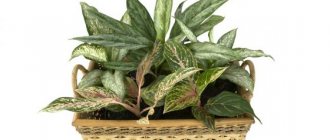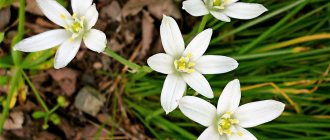» Flowers » Hathiora salosa - cactus without thorns
0
442
Article rating
Hathiora salina is a forest cactus-shrub native to the tropics of Brazil and Argentina. The following synonymous names are found: hatiora epiphylloides, hatiora salty-shaped, hatiora salty-shaped.
- Purchase and adaptation
- Landing
- Home care
- Selection of soil and location
- Fertilizers and fertilizers
- Humidity
- Temperature
- Illumination
- Watering
- Transfer
- Crown formation
- Reproduction methods
- Seeds
- Cuttings
- Dividing an adult plant
- Diseases and pests
- Useful videos
Hathiora salosa - a thornless cactus
Flower growers compare this succulent to coral or a Christmas tree, because it does not at all look like an ordinary cactus and does not even have needles. But caring for it at home requires skills, because the plant’s homeland is tropical forests with a unique climate.
Superstitions about hatiora
Hatiora has many nicknames. It is called "man's tears", "drunkard's dream" or "dancing bones". Not everyone likes it, not everyone will decide to buy a flower and put it in their home, because there are many superstitions.
One of the superstitions says that the flower does not tolerate men near it. He kicks them all out of the house. Some couples get divorced because of this.
Its drooping, drooping branches with leaves look like the drooping shoulders of a woman, like drops of their tears. According to superstition, hatiora is a symbol of a woman’s loneliness and melancholy. Therefore, many housewives are afraid to leave this exotic miracle in their home, contrary to common sense.
Another superstition says that it is very poisonous. There is no scientific confirmation of this information. But, just in case, it is better to keep it away from pets.
This is interesting: Year of the Pig 2021 what color is the dress
About hatiora pests
Not all pests prefer succulent plants, however, cacti can harbor mealybugs, scale insects, spider mites or whiteflies. Infection of a flower with a mealybug can be recognized by white spots on the stems, by spider mites - by yellow dots on the shoots, by other parasites - by the yellowness of the shoots and the general soreness of the hatiora.
Having discovered insects on a plant, you should first of all isolate it from other indoor flowers, having previously examined them. If the cactus is slightly infected, you can remove the parasites manually or place the bush under running warm water (not higher than +40 degrees). And then irrigate the hatiora stems with a solution prepared from water and laundry soap shavings.
However, if the succulent is overwhelmed by hordes of pests, such measures will not be enough. In this case, after removing the parasites, it is necessary to remove the heavily affected parts of the flower and treat it with an insecticide - Aktara, Aktellika, Confidor or another. It will take several treatments with a break of a week until the voracious insects completely disappear.
Experienced gardeners recommend regularly inspecting the green pet and promptly getting rid of parasitic insects, otherwise the epiphyte will die.
Good omens
Good signs of this flower include:
- sudden flowering;
- flowering in a house where the girl is not married;
- sudden flowering in a house where there are no children for a long time;
- sudden flowering in a poor family.
If a cactus (hatiora belongs to the cactus family) has not bloomed for a long time, but suddenly throws out buds and blooms vigorously, this means big changes.
An unmarried girl will find her groom and soon get married. If you haven’t had children for a long time and have been striving for this, it’s time to wait for a replenishment. The gender of the child is determined by the color of the flowers. If they are dark, there will be a son, if they are light, there will be a daughter.
For a married couple, this portends an improvement in their financial situation.
Bad omens
The flower has bad energy
There are some bad omens. Usually cacti are placed in places with heavy, bad energy. It’s not for nothing that they can often be seen on office tables near computers. The plant feels luxurious where there is often quarrel. It simply feeds on this negative energy.
Hatiora takes away sexual energy, the attraction of spouses to each other, if it stands in the bedroom.
There is another popular name for the flower. It is called a drunkard's dream. It has been noticed that often in a house where hatiora grows, men become drunkards. The more the cactus blooms, the more a person drinks.
If you put it in the central room, where the whole family usually gathers, then any holiday can be ruined. The cactus will take all the positive emotions for itself and eat them. It may seem that the quarrel arose out of nowhere in the midst of general fun.
How to give such flowers
It is better not to give such flowers to people dear to you. If you really want to give a flower in a pot, then you should do this only when the cactus blooms. Then family relationships will not worsen. Otherwise there will be constant quarrels. It may lead to divorce.
How to choose a place for hatiora
In order for the hatiora to protect the home and bring only goodness, you need to choose the right place for its growth. Favorable places include:
- kitchen
- windowsill
- Desktop
- next to the computer
- in the hall
In the kitchen he will take over all family quarrels. The window sill is well lit, and the cactus loves sunlight and warmth. The cactus begins to radiate positive energy from itself with pleasure.
A computer located on the network emits a lot of different energy, positive and negative information. This settles like an invisible veil over the entire room and on the person sitting next to you. If you place a cactus next to the screen, it will absorb all the negativity. It will absorb it and will not allow it to affect the owner.
On the desktop it will help get rid of the irritability and fatigue accumulated during the working day. The sorrows will go away, leaving behind only a faint shadow of memories. There's no better place for "dancing bones."
Hatiora, standing in the corridor or hallway, most importantly in front of the front door, will make the house inaccessible to evil people. A bad person with bad thoughts or intentions will not get into the home. The small thorns of this beautiful flower will ward off damage and the evil eye. All negativity directed at the owners of the house will be deactivated.
Hatiora care
In order for a cactus to bring joy and radiate only positive energy, it needs to be properly cared for.
It is important that he receives living conditions close to his natural conditions. His homeland is Brazil, a warm and sunny country. Therefore, the lighting must be good and constant. But direct sunlight can cause burns on the leaves and trunk. It is better to place it on the western or eastern side of the apartment.
It does not tolerate cold and dry air well. Therefore, it is better to water as the soil in the pot dries out.
In the hottest weather, spraying with soft and settled water is recommended. Be sure to feed. Negative energy alone in the house is not enough for a flower to grow and develop. Fertilize 2 times a month with a special fertilizer for succulents.
After flowering, it is better to replant into new soil. If the plant has grown, you need to change the size of the pot. For propagation, cuttings are taken and rooted in turfy or sandy soil.
Reproduction and care
Hatiora is a perennial and has a long flowering period. However, new plants bloom only after 2-3 years. There are 2 options for propagating this crop: cuttings and seed method.
Each of them has both advantages and disadvantages. To create beautiful cactus thickets, you can place many seeds or cuttings in one pot. It is in these conditions that hatiora grows in nature.
Flower cuttings take root quickly. This must be done in special mixtures or in ordinary water. After this, the seedlings need to be dried for several days. They should be planted in moist soil
It is important to consider that sprouts may take several months to appear after planting.
The seed propagation method is used a little less frequently. The collected seeds can be immediately planted in moist and nutrient-rich soil. Then place the container with the seedlings in a warm room where the temperature never drops below 20 degrees. Check the soil regularly and water if necessary.
Hatiora cactus: ways to care and grow a flower
Hatiora is a fairly well-known and popular genus of ornamental cacti. The name of this genus was given in 1923, in honor of the mathematician Thomas Hariot. And today, 5 or 6 plant species belong to the Hatiora genus. Many species have arched stems and are placed in hanging baskets or pots.
The stems of Hatiora have either a flat leaf-like shape or a circular cross-section. Depending on the variety, the stems can be very long - starting from 50 centimeters and ending with 2 meters. The stems are green all year round. They are smooth and have no spines or hairs. Their small funnel-shaped flowers grow at the ends of stems and look like daisies. The color of the buds varies from yellow-orange and pink to bright red.
This is interesting: What are the benefits of Raw Pumpkin?
The most popular species among gardeners are hybrids - Hatiora Gaertneri and Pink Hatiora Rosea. They can be found in garden stores all over the world. These hatiors also have the alternative name "Spring Cactus" or "Easter Cactus". This is due to the fact that most often they bloom in the spring. Although, with proper care, they bloom 2 times a year and even more often.
Another common species is Hatiora Salicornioides. These are slender, erect plants up to 60 cm in height. The stem consists of small segments (up to 3 cm in length). The flowers are small, bell-shaped, orange-yellow.
Wild Hathioras bloom in spring. They grow in the tropical rain forests of Southeast Brazil, as well as in the south of the state of Parana on the border with Paraguay. And although they are epiphytes: they grow mainly on the trunks of other trees , sometimes flowers grow on rocky soil.
Thursday, July 14, 2011
This plant resembles the skeleton of an extinct animal, which is why it is called the “dancing bones cactus.” Caring for hatiora is not difficult, although it is a little different from caring for other cacti. Hatiora does not like direct sunlight and feels great on northern windows. In summer, take the plant out into the open air - onto a balcony, loggia, terrace, but shade it from the sun; You can also hang a pot of cactus in the garden on the lower branches of trees. Water the plant abundantly in the spring and summer, spray it daily, reduce watering in the fall and winter, spray only occasionally. Make sure that there is no water left in the pan after watering: overmoistening the soil and watering with cold water can lead to rotting of the roots.
Amateur gardeners grow several varieties of hatiora, which can bloom with bright red, pink-purple, or pink inside and red bell-like flowers on the outside.
If the hatiora begins to wilt during hibernation, water it a little with warm water. When daylight hours noticeably increase, the cactus will begin to emerge from hibernation - this will serve as a signal to you that it is time to feed. Do this 1-2 times a month with fertilizers for cacti, once a year you can feed the hathiora with organic fertilizers.
If the old shoots of the hatiora have shriveled and become lethargic, rejuvenate the plant by lightly pruning them. The cactus can be propagated by cuttings with 2-3 segments: lightly dry them in air and plant them directly in moist soil or sand.
Take a shallow pot for the “dancing cactus” and ensure good drainage. The soil should consist of equal parts of leaf soil, turf and sand.
An interesting and original flower, hatiora, enjoys well-deserved love among flower growers. The whimsical leaves resemble a dancing skeleton. Existing signs and superstitions about hatiora endow it with mystical properties.
Growing conditions
Light: These tropical cacti do not like bright light. Never leave them in direct sunlight or midday sun.
Water: Unlike other cacti, the soil of these plants must be kept moist at all times. But you need to make sure that the ground is not too wet.
Recommended reading: How often to water cacti?
Soil: In the wild they grow on rocks and trees, so these flowers require dense soil. They grow well in a mixture of soil and pumice (preferred) or tree bark. The usual ratio is 1 to 1.
Fertilizers: during the active growth period, Hatiora needs to be fertilized 1-2 times a month. During the dormant period, it is worth stopping feeding.
Reproduction
The best and easiest way to propagate Hatiora is by cuttings : you need to take the faded apical branches with two or three segments and break them off from the parent plant (the plant is fragile and it is better to break off the cuttings at the internodes than to cut them off). The ends of the broken cuttings are powdered with crushed charcoal and left to dry for a day. Then they are planted in a moist substrate and make sure that the soil does not dry out, but do not overfill it with water. The cuttings take root well.
Skilled collectors graft beautifully flowering Hatiora onto rootstock. But this requires special skill and a lot of practice.
is possible . Prepare a greenhouse with a mixture of sand and peat and plant fresh berry seeds there. Spray the substrate and cover with film or glass. After a while, shoots will appear, when they grow up, they need to be planted in separate pots.
Cuttings
Plant care tips
- comfortable conditions for hatiora - indirect light, as well as morning and evening sun;
- the soil must be well drained;
- this flower loves long nights - 12-14 hours. Therefore, we recommend keeping the plant under a paper bag to protect it from excess sunlight;
- It is not recommended to touch the plant during the flowering period, as the buds may fall off with any movement;
- within a month, after the hatiora has bloomed, reduce the frequency of watering.
Hachiora Reproduction
Propagation by cuttings is done after the plant has flowered. You need to break off the top of the stem (leaving 2-3 segments on it), treat the broken area with charcoal. We leave the cuttings to dry for 8-10 hours, after which we plant them in the prepared mixture consisting of peat and sand, and moisten the soil. The cuttings will take root within approximately 30-45 days.
Species such as Hatiora rosea and Hatiora Gartner can be grafted onto Pereschia spinosa. It is better to do this in the warm season. Let's prepare the plants: you need to break off the stem of the hatiora with 2-3 segments and split it into 2-3 cm. We do the same with the stem of the pereskia (cut off the branched part), sharpen it on both sides with a flat wedge and insert it into the stalk of the hatiora. For closer contact between the cuts, it is necessary to secure the grafted plants well with an adhesive plaster. We maintain a favorable air temperature for the grafted plant (20 degrees Celsius), moisten the soil, and when shoots appear below the grafting site, remove them. At about 15-25 days, the hatiora will begin to grow, which means you can remove the patch. A grafted plant has advantages - it blooms more abundantly.
Signs and superstitions
One of the types of Hathiora, which we wrote about above, is called Dancing Bones. The British did this, but in our country these flowers have a different name - male tears. There is an opinion among people that hanging plants cause discord in the family and loneliness. This is where the superstitions associated with Hatiors end.
Whether to believe in it or not - everyone decides for themselves - that’s why they are superstitions. In our opinion, you only need to be wary of one thing - some types of these plants are poisonous and can harm your pets. We are sure of one thing: these flowers look great and give real aesthetic pleasure.
Superstitions about Hatiora
Hathiora is a wild plant of South America that is completely devoid of leaves, but, like many succulents or cacti, the flower trunk is fleshy and has many small shoots. Despite the fact that in the wild, Hatiora grows in rock crevices and on rocky soil, this flower has become a favorite among other unusual plants among lovers of indoor greenery. Small, indoor flowers of Hatiora, in the wild, can grow up to several meters in diameter and create a whole carpet of unusual inflorescences.
Another interesting fact is that, due to its unusual shape, the plant was called a dancing skeleton and very quickly became overgrown with all sorts of superstitions, signs and legends.
Hathiora blossom
All Hatiora species begin to gain color in early spring. A blooming flower retains its beautiful appearance for only a few days, but the uneven formation of buds on different shoots extends the total flowering period to 2 months.
The difference between flowering and similar cacti is that they form on the terminal segments, while Hatiora Rhipsalis blooms in the intersegmental axils along the entire length of the shoot.
After the flowers fade, berries are formed in their place, in which the seeds ripen.
Hathiora signs and superstitions
The most common superstition associated with this plant says that this flower absolutely does not tolerate the male sex. Many esotericists claim that the appearance of Hatiora, with its lowered segmental branches, symbolizes women's shoulders, drooping under the burden of melancholy and disappointment. Others say with confidence that this is a symbol of female tears, from unrequited love. One way or another, superstitious women will never place this plant in their home, especially if they do not want to lose their beloved man.
The second point that does not recommend keeping this plant in the house is its unjustified reputation as a poisonous flower. Scientifically, no one has been able to prove that the Hatiora flower is capable of poisoning someone with its juice, even when eaten. Despite this sign, many pet lovers are hesitant to grow this plant in the house.
Diseases and pests
Excessively frequent and abundant watering, especially at low temperatures, provokes bacterial infection of hatiora. It can manifest itself as foci of softening in segments covered with a viscous liquid.
Having noticed these signs, you must immediately remove the damaged parts, reduce watering and move the pot to a warm place. When the infection spreads, the entire cactus dies .
Advice! It is better to immediately take a healthy cutting and root it, while at the same time trying to save an adult bush.
Diseases appear if hatiora remains in unsuitable conditions for a long time:
- If the shoots become gray, colorless and wither, then late blight infection . A possible salvation for the plant will be treatment with Oxyx.
- Fungal infections manifest themselves as plaque in the form of mold on shoots or soil. It always occurs at high humidity. Treatment consists of treating with an antifungal plant medicine while reducing dampness.
Hatiora can be parasitized by scale insects, mealybugs or spider mites . All of them are visible on the branches and feed on the sap of the succulent.
To control pests, you need to spray the flower with an insecticidal agent - “Fitoverm” or “Aktara”. Treatment must be carried out three times with an interval of 5 days. It is recommended to replace the top layer of soil with a new one after the first treatment.
Important! If any diseases are detected, the hatiora needs to be isolated from other plants.
Hatiora houses folk signs and superstitions
The peoples of South America, as well as most lovers of these exotic flowers, associate Hatiora with a number of predictions, both with positive and negative outcomes. Positive signs include the following:
- If Hatiora unexpectedly blooms in a house where a couple lives without children, then most likely they will be replenished. Moreover, if the flowers are dark, then you should expect a boy, and if they are light in color, then most likely a girl will be born.
- For an unmarried girl, a blossoming flower prophesies that she will soon find her betrothed.
- Another superstition associated with the sudden flowering of Hatiora is an increase in finances and wealth, this is especially true for low-income families.
It is important to understand that in general the flowering of this plant is a good sign promising good luck, prosperity and positive changes in life.
Many are afraid and wonder whether it is possible to keep Hatiora at home due to negative signs. In fact, there are not many of these superstitions:
- A drunkard's dream flower. Long-term observations have shown that in a house where this plant is present, very often people suffer from alcohol addiction. Moreover, it is mostly men who suffer.
- Good growth of this succulent is observed in places and rooms where negative energy is constantly present. Although this applies to all types of succulents and cacti, Hachiora stands out especially in this regard. That is why this plant can often be seen blooming in office spaces, conference rooms and kitchens in unfavorable families.
- Another superstition is that Hathiora takes away sexual energy from both men and women. It is for this reason that it is not recommended to place this plant in the bedroom, as spouses may completely lose desire and attraction to each other.
- It is not advisable to place this plant in a room where family gatherings are held, holidays are celebrated, and the family has dinner. You won’t have to wait for positive emotions; they will all be absorbed by this cactus.
This is interesting: How to sew a fleece hat
Alternative view
The unusual appearance of the hatiora cactus has become a reason for discussion in different countries. For many, its shape resembles bones, although some believe that the shoots look like coral or small bottles. Despite the fact that the plant is classified as tropical and grows in the forests of Uruguay and Brazil, it is easy to grow in countries with cooler climates.
—
Hatiora - an unusual succulent
The names that people gave it are interesting: “drunkard’s dream”, “man’s tears” and even “dancing bones”.
Hatiora is an evergreen plant that blooms from December to March. Delicate yellow flowers cover the shoots abundantly and create a very unusual and elegant look. After the flowers fade, berries will form in their place, and the plant will take on an even more unusual appearance.
The structure of the succulent has the appearance of green segments without leaves or spines. The root system is fibrous. The plant receives moisture and nutrients from the air. It grows slowly, so often its height in the first five years barely reaches 35 cm. It becomes tall only after decades.
Kinds
There are several types of hatiora:
- Hatiora rosea;
- Hatiora Greser;
- Hatiora gaerneri;
- Hatiora herminiae;
- Hatiora salicornioide - the most common;
- hatiora saltwort, etc.
The segments of different varieties have a cylindrical, flat or club-shaped shape. The segments are covered with flowers in winter; this rare property is especially appreciated by flower growers.
In modern sources, the genus Ripsalidopsis (“Decembrist”) does not exist and is considered a subspecies of the genus Hatiora.
Hatiora: good folk signs
The succulent is endowed with various superstitions for its mystical appearance. Among the favorable signs, it is worth noting their flowering. The yellow and coral flowers that cover the stems are certainly an eye-catcher. If a plant has not been pleased with the appearance of flowers for a long time, and suddenly blooms, then according to signs it is believed that changes will soon have to be expected. Moreover, the plant brings only positive changes in this case. So the flowering of hatiora is always awaited with great joy.
The sign about the place where the plant bloomed is interpreted interestingly. If flowers appear in the house of a married woman, then this is a sign of an imminent addition to the family. Dark flowers - expect a boy, and light flowers - girls.
If the plant showed flowers in the house of an unmarried girl, then we should expect an imminent wedding.
If flowers appear in a family with children, this symbolizes an increase in salary, an unexpectedly good extra income, or an improvement in the financial condition of the family as a whole.
The positive impact of hatiora is also associated with the place where it is placed in the apartment. If you are afraid of a bad influence on your home, bad energy from visiting people, guests, then it is recommended to place this flower next to the front door. In the hallway, this flower, thanks to its needles, will help drive away bad thoughts from the owners of the house, and will not allow damage and the evil eye to penetrate into the apartment.
Bad omens and superstitions
But there are also bad omens associated with this plant.
If we look at cacti, we can safely say that they do not grow in every home. It would seem an unpretentious plant, but it requires proper attention and a special location.
Reference! According to legend, hatiora does not grow in any home. The plant takes root only in places with poor energy. A house where couples constantly fight, where there is no place for peace and good mood, becomes a favorite place for this flower. It is believed that the more turbulent relationships in the family, the better this flower grows.
There is a belief that the plant has a negative effect on relationships in couples, and can affect not only communication between husband and wife, but also reduce their sexual energy, which can lead to negative consequences.
Whether or not to believe in such bleak prospects for finding a flower in an apartment is, of course, everyone’s business. But it is still recommended to listen to signs. So, if a plant grows in the house, then it is worth taking a closer look at what is happening in the family. In this case, someone in the family is sure to drink heavily or something like that.
It is also worth taking a close look at the plant itself. If you want a person to receive less negative energy, then you should keep this flower away from the places where it is located most in the apartment.
Where to place the succulent?
The plant loves bright rooms, so you should choose a room with diffused light for it. Direct sun exposure should be avoided. The succulent also does not like drought, so you should choose humid places and constantly spray the hathiora if you want it to grow well.
Advice! The ideal side of the world for placing a plant on a windowsill is the western or eastern side.
How to grow a healthy plant that brings joy and protection to the family?
First of all, you should be a little skeptical about all the signs associated with the plant. If family relationships were not initially particularly warm, then it is unlikely that a flower will be able to significantly worsen them. But it’s still worth taking a closer look at the place where you plan to place the succulent. The ideal place is the kitchen. The flower will be able to take away all the bad energy from the house.
You can also place such a plant in your workplace, because it is there that it can absorb bad energy, stress, misunderstanding and irritation.
It is very good to place the plant near the computer. It will not allow the harmful effects of technology to pass on to humans.
When choosing a hatiora for its beautiful appearance, it is still worth taking a closer look at the recommendations on where it is better to place the plant. It often happens that a flower exhibits its positive properties depending on its location. You should also believe in omens, because folk wisdom has often been tested over the centuries and tells the truth. But still, when choosing a plant for your home, the main thing is that you really like it.
Zhanna Lyubarskaya
Reviews about the signs of the Hatiora flower
Not a single superstition associated with this plant has scientific confirmation and, accordingly, whether to believe in them or not is a private matter for everyone, but judging by the reviews of many lovers of unusual plants who plant this cactus at home, the signs are indeed confirmed. Although, this could be a banal coincidence or the desire of the person himself to connect causes and effects. In any case, the inhabitants of South America do not tend to grow the flower in the houses where they live.
On the other hand, the claim that cacti and succulents can protect humans from electromagnetic radiation is not such a myth. Indeed, computers and other office equipment emit a wide range of waves that have a depressing effect on humans. Hatiora is able to perfectly absorb this negative energy, thereby protecting a person. Another superstition associated with hatiora, which has been verified and about which you can find truthful reviews on the Internet, is associated with keeping a flower in the corridor. By placing the plant in front of the front door, you don’t have to be afraid that ill-wishers or people who carry a charge of negative energy will enter the house. Also, being in the hallway, Hatiora is able to ward off damage and the induced evil eye.











